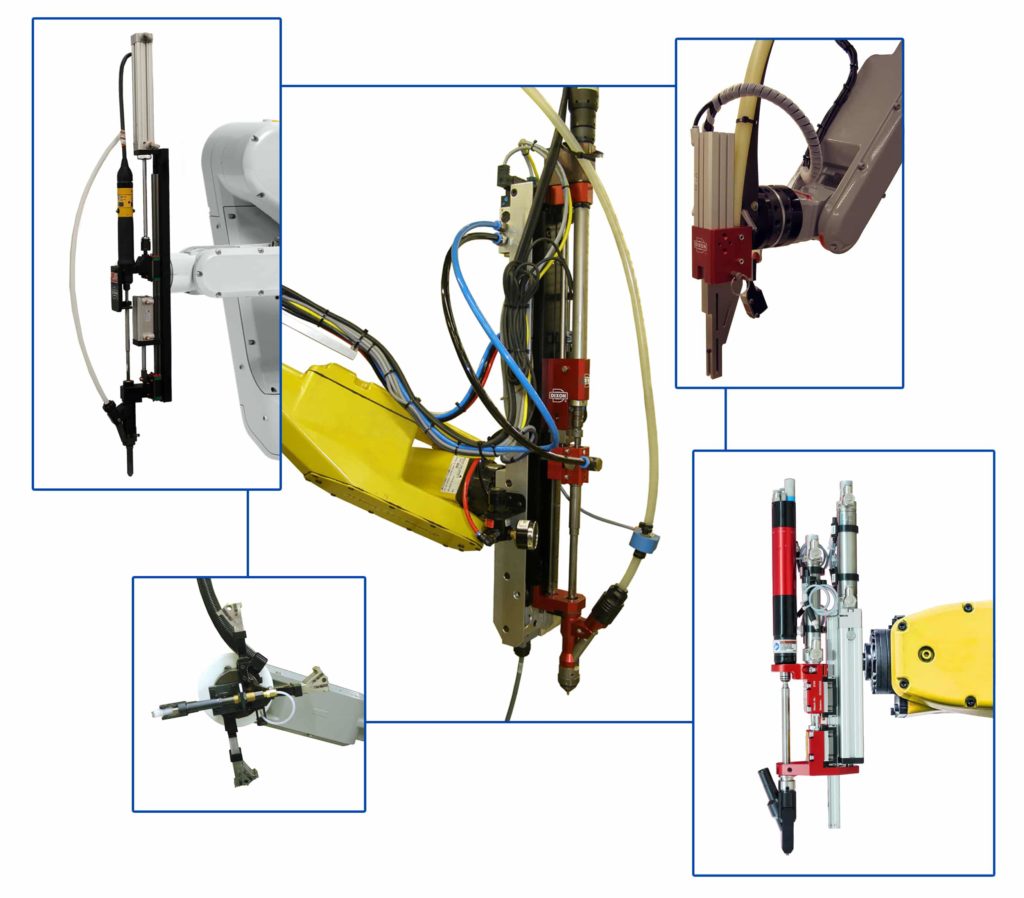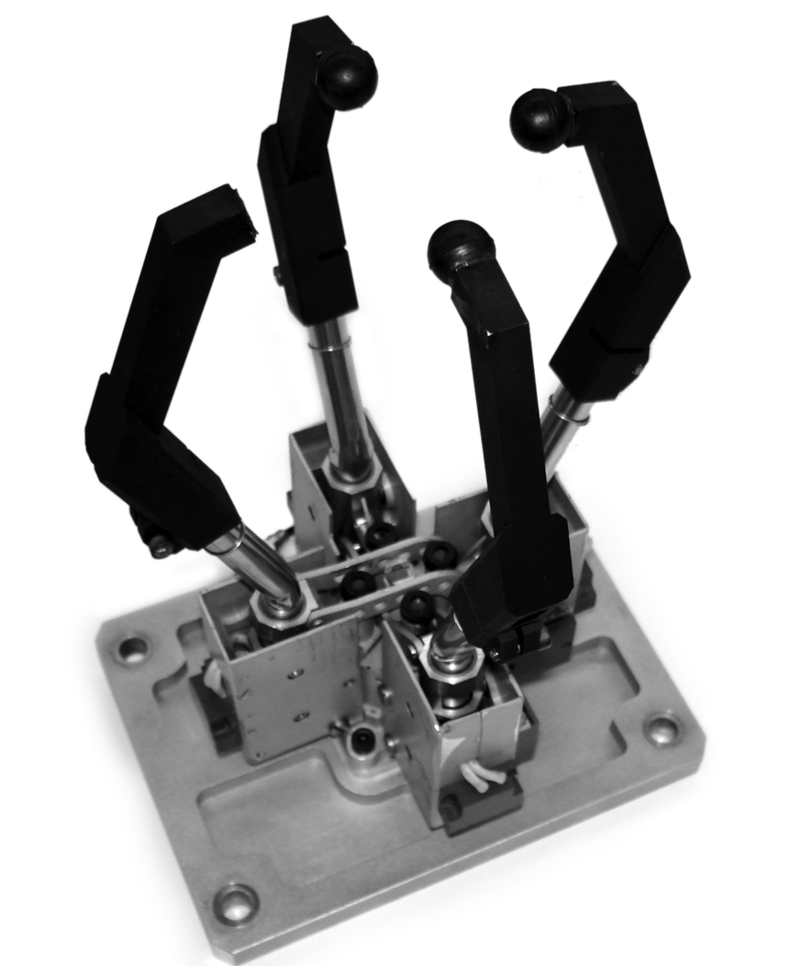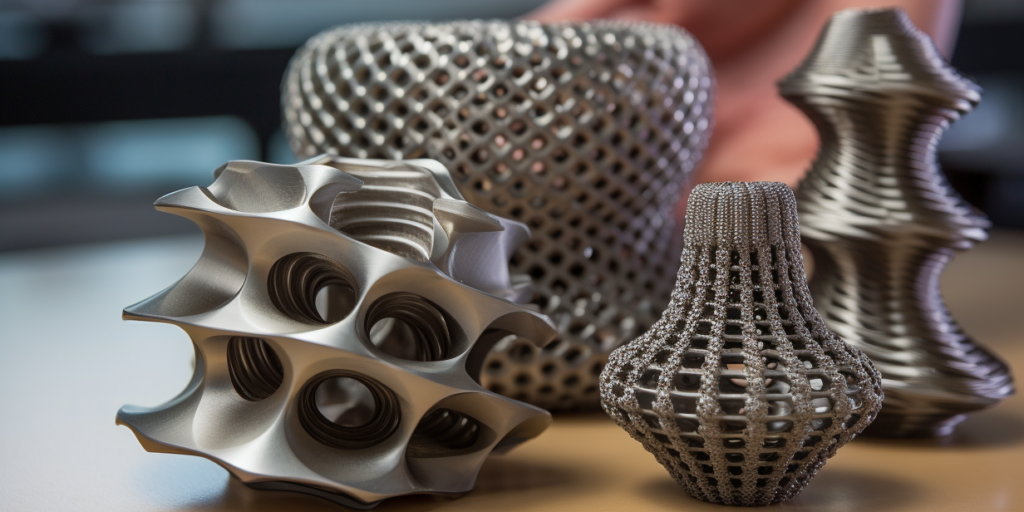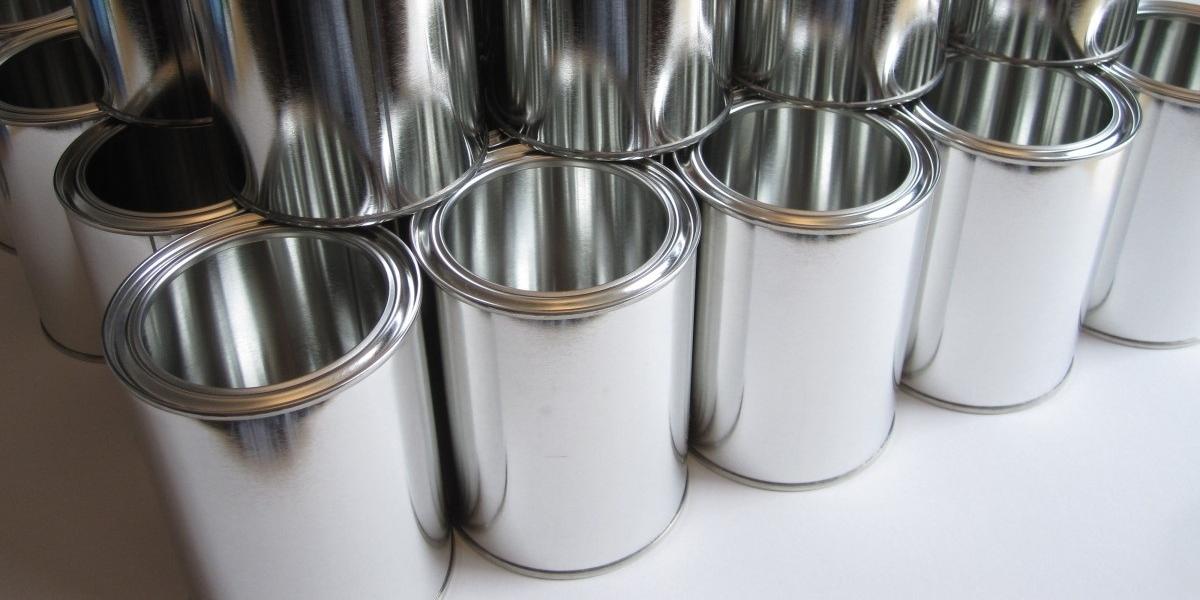In the rapidly evolving field of robotics, understanding robot end effectors is crucial for maximizing automation processes. End effectors are the devices attached to the end of a robotic arm, allowing it to interact with the environment.
These components play a pivotal role in various industrial applications, making the choice of the right end effector vital for enhancing productivity and efficiency in automation. This article delves into the different types of end effectors, factors to consider when selecting one, and the integration of sensors in robotic systems.
What Are the Different Types of End Effectors in Robotics?

Overview of Common End Effector Types
End effectors in robotics can be classified into several types, each designed for specific tasks. The most common types of end effectors include grippers, suction cups, magnetic grippers, and welding end effectors. Grippers are perhaps the most widely recognized type of end effector, used to grasp and hold objects.
They can be mechanical, using fingers or claws to grip, or pneumatic, utilizing air pressure to create a gripping force. Suction cups, on the other hand, employ vacuum technology to lift and manipulate flat or smooth objects, making them ideal for handling materials like glass or sheet metal.
Magnetic grippers are specialized for ferromagnetic materials, providing a stronghold during movement. Each type of end effector is tailored to meet the demands of diverse industrial processes, showcasing the versatility of robotic technology.
Comparison of Grippers and Other End Effectors
When comparing grippers to other end effectors, it is essential to consider their operational mechanisms and applications. Grippers are fundamentally designed to grasp and manipulate objects, making them indispensable in manufacturing environments where parts need to be picked, placed, or assembled.
In contrast, other end effectors, such as welding end effectors, are specifically engineered to perform tasks like joining materials together. This differentiation highlights the need for manufacturers to understand the unique functionalities of various end effectors when designing automation systems.
Additionally, robotic force compliance end effectors are gaining traction, allowing robots to adapt their grip based on the shape and weight of the object, further enhancing their utility in complex tasks.
Applications of Various End Effector Types
The applications of different types of end effectors are vast and varied, spanning multiple industries. In the automotive sector, for example, robotic grippers are employed in assembly lines to efficiently handle components during the manufacturing process.
Suction cups are commonly used in packaging industries, facilitating the smooth transfer of products from one conveyor to another. In the electronics industry, magnetic grippers can be utilized for assembling small, delicate parts without causing damage.
Overall, the choice of end effector significantly influences the efficiency and effectiveness of automation, underscoring the importance of selecting the right end effector for specific tasks.
How to Choose the Right End Effector for Your Business?

Factors to Consider When Selecting an End Effector
Choosing the right end effector for your business involves careful consideration of several factors. First and foremost, the nature of the objects being handled plays a critical role; weight, size, and material properties must all be assessed.
For instance, if the task involves handling fragile items, a robotic gripper with soft fingers or a suction cup might be more appropriate.
Another vital factor is the speed and precision required for the task at hand. Some applications demand quick, repetitive motions, while others may require delicate handling and exact placement.
Furthermore, environmental conditions, such as temperature and humidity, can also influence the selection process, as certain end effectors may be more suited to withstand harsh environments.
Matching End Effectors to Specific Tasks
When selecting an end effector, it is crucial to match its capabilities to the specific tasks it will perform. For example, in an assembly line where precision is paramount, robotic grippers equipped with sensors to detect object alignment could significantly enhance operational efficiency.
On the other hand, if the task involves moving heavy materials, pneumatic grippers known for their strength and reliability might be the best option.
Additionally, businesses should consider the versatility of the end effector; a custom end effector designed for multiple functions can provide significant advantages over single-purpose tools, allowing for greater flexibility in operations.
Cost vs. Functionality: Making the Right Choice
In the realm of automation, balancing cost and functionality is a critical aspect of choosing the right end effector. While high-end robotic grippers and advanced pneumatic systems offer superior performance, they also come with a higher price tag.
Businesses must evaluate their specific needs and budget constraints to make informed decisions. A thorough cost-benefit analysis can help organizations understand the long-term value of investing in more advanced technology versus opting for more economical solutions.
Ultimately, selecting the right end effector involves considering both the immediate requirements and future scalability of operations.
What Role Do Sensors Play in Robot End Effectors?
Types of Sensors Used in Robotic End Effector Design
Sensors play an integral role in enhancing the functionality of robotic end effectors. Various types of sensors are utilized in end effector design, including force sensors, proximity sensors, and vision systems.
Force sensors are crucial for ensuring that the robot applies the appropriate amount of grip for different objects, preventing damage while maintaining efficiency. Proximity sensors help the robotic arm to detect the presence of objects, enabling it to adjust its movement accordingly.
Vision systems, often integrated with cameras, allow robots to identify and locate objects, enhancing their ability to perform complex tasks autonomously.
How Sensors Enhance the Functionality of End Effectors
The integration of sensors into end effectors significantly enhances their functionality, leading to more efficient and precise robotic operations.
For instance, with the use of robotic force compliance end effectors, robots can adjust their grip based on real-time feedback from force sensors. This capability is especially beneficial in assembly tasks where the robot must handle components with varying degrees of fragility.
Additionally, the data collected from sensors can be used to improve the overall efficiency of the automation process. By analyzing sensor feedback, businesses can fine-tune their robotic systems for optimal performance and productivity.
Examples of Sensor Integration in Robotic Systems
Numerous examples illustrate the successful integration of sensors in robotic systems. In automated warehouses, robotic arms equipped with vision systems can navigate and retrieve items from shelves with remarkable precision.
Force sensors allow these robots to handle fragile products without causing damage. In manufacturing environments, sensors are used to monitor the condition of the end effectors, ensuring they remain in optimal working condition and alerting operators when maintenance is required.
These examples underline the importance of sensor technology in advancing the capabilities of robotic end effectors and enhancing overall automation efficiency.
What Are the Applications of Robotic Grippers in Automation?

Industrial Applications of Robotic Grippers
Robotic grippers have found extensive applications across various industries, primarily due to their versatility and efficiency. In automotive manufacturing, grippers are used for assembling components and transferring parts along the production line.
They facilitate high-speed operations while ensuring accuracy and repeatability. In the food and beverage industry, robotic grippers are employed to pick and place items in packaging processes, enhancing hygiene and speed.
Additionally, in electronics manufacturing, specialized robotic grippers handle delicate components, preventing damage during assembly and testing processes. The widespread use of robotic grippers signifies their importance in modern automation.
Advantages of Using Grippers in Automated Processes
The advantages of using robotic grippers in automated processes are manifold. Firstly, they significantly increase the speed and efficiency of operations, reducing cycle times and improving throughput.
Secondly, robotic grippers enhance precision, ensuring that tasks are performed accurately with minimal errors. This not only boosts productivity but also leads to higher quality output. Additionally, the use of robotic grippers reduces labor costs, as fewer human operators are required to perform repetitive and strenuous tasks.
Moreover, the safety of the work environment is improved, as robots take over potentially hazardous tasks, allowing human workers to focus on more complex and strategic activities.
Future Trends in Gripper Technology and Automation
The future of gripper technology and automation is poised for significant advancements. With the rise of artificial intelligence and machine learning, we can expect to see smarter robotic grippers capable of learning from their environment and adapting to changing conditions.
Innovations such as soft robotics may lead to the development of grippers that can handle a wider range of objects with varying shapes and sizes. Additionally, the integration of advanced sensors will enhance the responsiveness and adaptability of robotic systems, allowing them to perform complex tasks with greater ease.
As automation continues to evolve, the role of robotic grippers will undoubtedly expand, driving further advancements in efficiency and productivity across various industries.
How Do Mechanical and Pneumatic Grippers Differ?

Understanding Mechanical Grippers: Design and Function
Mechanical grippers are one of the most traditional types of end effectors used in robotics. They operate using a system of gears and motors to open and close their fingers, allowing them to grasp objects securely.
Mechanical grippers are known for their reliability and strength, making them suitable for handling heavy or rigid items. Their design can vary, with some featuring multiple fingers for enhanced dexterity.
However, the flexibility of mechanical grippers can be limited compared to other types, particularly when handling delicate or irregularly shaped objects.
The Benefits of Pneumatic Grippers in Robotics
Pneumatic grippers, in contrast, utilize compressed air to generate gripping force. This method allows for rapid and powerful movements, making pneumatic grippers particularly effective in high-speed automation environments.
The ability to control the grip strength through air pressure provides flexibility in handling various objects, from light to heavy. Moreover, pneumatic grippers can be designed to have a softer touch, making them suitable for delicate items.
Their quick response times and adaptability make them a popular choice in industries where speed and versatility are paramount.
Choosing Between Mechanical and Pneumatic Grippers
When deciding between mechanical and pneumatic grippers, businesses must consider their specific operational needs. Mechanical grippers are ideal for applications requiring high strength and precision, particularly when handling heavy components.
On the other hand, pneumatic grippers offer advantages in speed and flexibility, making them suitable for tasks that require quick adjustments or handling of diverse shapes and sizes.
Ultimately, the choice will depend on factors such as the nature of the tasks, the types of materials being handled, and the overall automation goals of the business.
CNC Manufacturing Processes and XMAKE as a CNC Machining Supplier
CNC manufacturing processes are a cornerstone of modern manufacturing. CNC machines use pre-programmed computer software to control the movement of tools and machinery. This allows for high precision and repeatability in the production of parts and components. Some common CNC manufacturing processes include:
- CNC Milling: This process uses rotary cutters to remove material from a workpiece. It is used for creating complex shapes and features such as slots, holes, and contours.
- CNC Turning: This process involves rotating a workpiece while a single-point cutting tool removes material. It is typically used for creating cylindrical parts such as shafts and bushings.
- CNC Drilling: This process uses a rotating drill bit to create holes in a workpiece. It is often used in conjunction with other CNC processes such as milling and turning.
- CNC Grinding: This process uses a rotating grinding wheel to remove material and achieve a high surface finish. It is used for finishing operations where high precision is required.
XMAKE as a CNC Machining Supplier
XMAKE is a leading supplier of CNC machining services. The company offers a range of advantages that make it a preferred choice for many businesses:
- High Precision and Quality: XMAKE uses state-of-the-art CNC machines and employs highly skilled technicians to ensure that every part is manufactured to the highest standards of precision and quality.
- Versatility: XMAKE offers a wide range of CNC machining services, including milling, turning, drilling, and grinding. This makes it a one-stop shop for all your CNC machining needs.
- Customization: XMAKE works closely with clients to understand their specific requirements and provide customized solutions. Whether you need a prototype or a large production run, XMAKE can deliver.
- Fast Turnaround Times: XMAKE understands the importance of timely delivery. The company has streamlined its processes to ensure that orders are completed and delivered as quickly as possible.
- Competitive Pricing: Despite offering high-quality services, XMAKE maintains competitive pricing. The company works to provide cost-effective solutions without compromising on quality.
- Customer Support: XMAKE prides itself on excellent customer support. The company offers technical assistance and guidance throughout the entire process, from design to delivery.
Conclusion
Robot end effectors are a crucial component of modern automation systems, enabling robots to perform a wide range of tasks with high precision and efficiency. By understanding the different types of end effectors and their applications, businesses can make informed decisions that enhance their automation processes.
Whether it is a gripper for material handling, a welding torch for manufacturing, or a specialized end effector for medical applications, the right choice can significantly affect operational efficiency and productivity.
Moreover, CNC manufacturing processes play a vital role in producing high-precision parts and components. Companies like XMAKE are essential partners in the manufacturing industry with their high precision, versatility, customization options, fast turnaround times, competitive pricing, and excellent customer support.
By leveraging the right end effectors and CNC machining services, businesses can stay competitive in today’s fast-paced industrial landscape.








